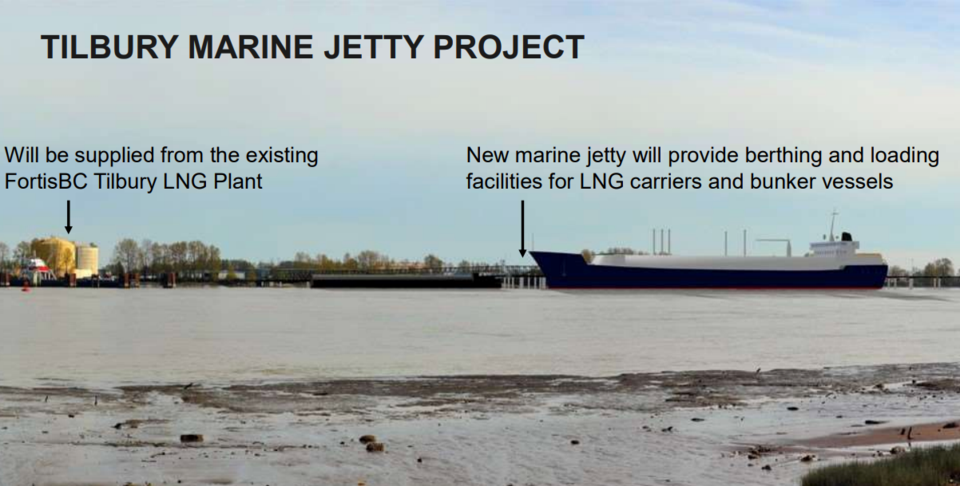Metro Â鶹´«Ã½Ó³»says it will begin consulting with Fortis BC and its partner over the recent federal government-approved Tilbury Marine Jetty (TMJ) LNG terminal on the Fraser River, now set for construction in 2025.
What's left to do before construction is create plans for environmental management, riverbed monitoring, greenhouse gas reductions and air quality, in consultation with the regional government, per a tabled Oct. 3 at the climate action committee.
The jetty project in Delta was ultimately by Minister of Environment and Climate Change Steven Guilbeault in July, with the B.C. Environmental Assessment Office providing an from Tilbury Jetty Limited Partnership (TJLP), including operating and monitoring conditions.
With the approval came a revised contemplation of how many ships will pass up and down the river annually — a near tripling, in fact, from an original projection of 274 annual trips along the river to 730.
As such, the assessment noted that as many as 307 “bunker vessels” and 58 “LNG carriers” will make a round-trip on the river — as many as one per day.
The river is one of the country’s most sensitive and diverse ecosystems.
The project has drawn critics from environmental groups as it promotes the burning of fossil fuels. The ships pose a risk to the river and estuary as well as its habitants, most notably the Southern Resident Killer Whale population.
Richmond petition
Last March, around 400 Richmond residents signed a petition against plans to expand the liquefied natural gas (LNG) storage facility that will serve the jetty project.
was given to Richmond-Steveston MLA Kelly Greene, which was presented on March 7 in the B.C. legislature.
Conversely, the project was designed to first supply a growing number of marine vessels with LNG and then ultimately ship LNG to China, which continues to increase its coal emissions annually, according to the International Energy Association.
“According to TJLP, TMJ would support the Port of Â鶹´«Ã½Ó³»in its ambition to create the world’s most sustainable port and open up B.C.’s natural resources to markets that need low-carbon energy to displace coal,” the EAO report stated.
The assessment addressed concerns over ship noise that can be harmful to the killer whales; it also looked at ship strike risks, finding whales to be vulnerable (or of “low resiliency”) to both.
Underwater noise
Minister Guilbeault’s approval is on the condition TJLP and its shipping clients use the Coastal Ocean Research Institute's Whale Report Alert System (WRAS).
The EAO concluded that it is “satisfied that TMJ would not have significant adverse residual effects on marine mammals from underwater noise or vessel strikes.”
And, to mitigate the risk of marine accidents, LNG ships are to go no faster than 10 knots once they enter the river.
“The cumulative risk of all modelled cases associated with cargo loading at the jetty, including the risk from ignition of an LNG spill, is one fatality every 10,000 to 100,000 years within an approximately 300-meter radius of the jetty,” stated the EAO with respect to the risk of explosions.



